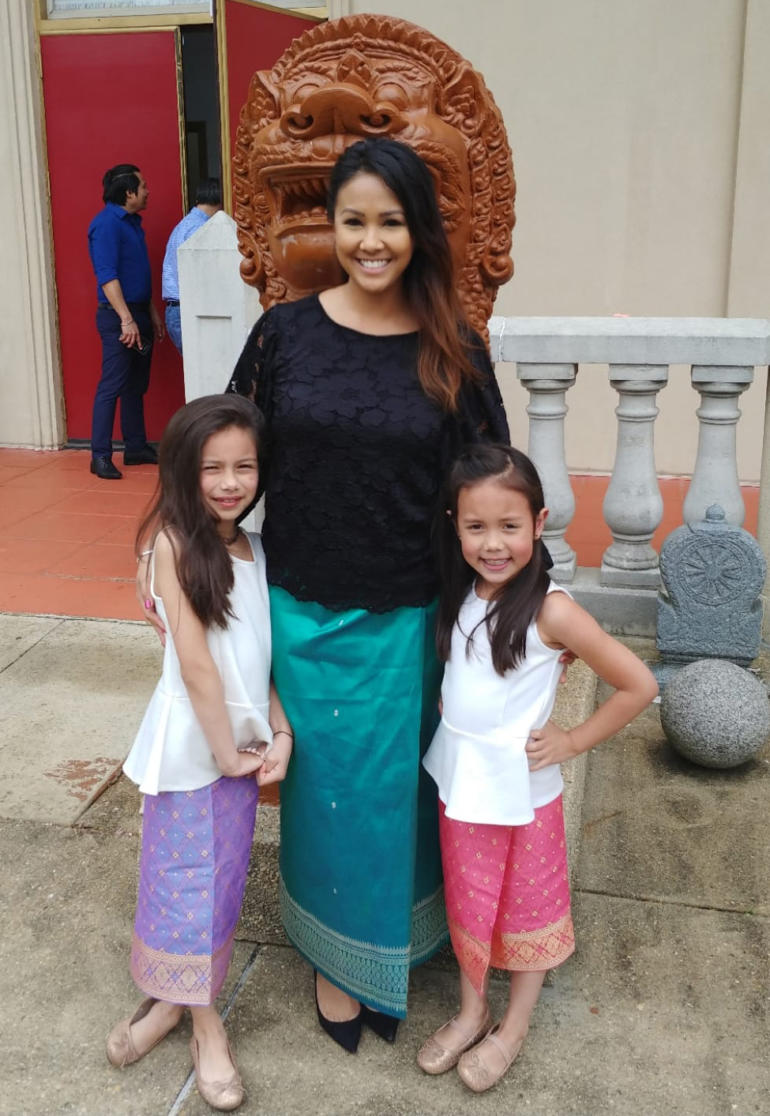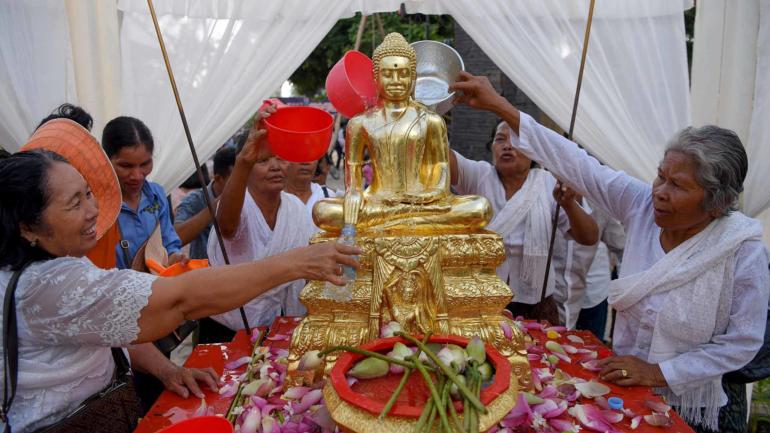The Cambodian New Year, or Chaul Chnam Thmey, is a three-day extravaganza that takes place every year from April 14-16th.

In Maryland, the Cambodian Buddhist Society of Silver Spring has been hosting celebrations for Cambodian immigrants for more than 10 years, and I’ve been taking my daughters there for the last eight.
As a Cambodian-American, I want my daughters to learn about their culture and teach them about our celebrations.
Every year they love to dress up in the sampot phamuong a traditional Khmer outfit that includes a rectangular woven cloth worn around the legs.
One of the first things we do when we arrive at the temple is light incense sticks at the statue of Buddha and place them into a pile of rice mounted inside a vase. Then we say our prayers to the statue.
We usually pray to bless our family and to bless our loved ones who have passed away. Since Buddhists believe in reincarnation, I always tell my kids that it’s important to pray for our loved ones who have passed, hoping that their lives are better than the ones they’ve had before.

Chanlee Saray-Yim and her two daughters during Cambodian New Year celebrations in Maryland.
Every year, monks arrive at the temple to chant and bless all the visitors. After the chanting, they dip flowers in water and bless the crowd with this holy water. After that, visitors line up to present food for the monks, whatever is left, is given to everyone to eat.
The afternoon is filled with festivities such as games and traditional Cambodian dancing.
People watch traditional folk dances such as the Rom vong, the Rom Khbach, and the Saravan.
My mother and grandmother were both trained in classical Khmer dance, and I would love my daughters to learn the dances so they can pass it down to their children one day.
The three-day celebration includes traditions for each day.
The first day is known as Moha Songkran. On this day, Cambodians will welcome the new angels for the year. People will clean their homes and offer food to the monks at the temple. Monks will then bless the family with prosperity and happiness. Some Cambodians will use this day to find their future spouses. One of the games that they play is known as “the throwing of the scarves” which traditionally offered a rare opportunity for single men and women to mingle.
The second day is known as Vanabot or the bang scole, it’s when we remember our elders, living and dead. On this day, monks perform traditional ceremonies to honor family members who have passed away. People also build sand shrines or stupas to remember loved ones.
The third and final day is Thgnai Loeung Sak when we celebrate the official beginning of the new year. Stupas are blessed by monks and devotees bathe Buddha statues in the temples in a ceremony called “Pithi Srang Preah”. People also symbolically clean their elders and ask for forgiveness for any mistakes made during the year.
I hope that my daughters understand how important it is as Cambodian-Americans to celebrate their culture. Like all Americans, we wish our
As a Cambodian American, I find it important to educate my daughters about what it means to celebrate our culture here in America. Like Americans, we only want the best for our family and friends — including a new year filled with good health, prosperity, and joy.
Chanlee Saray-Yim is an operations producer at CGTN America.
 CGTN America
CGTN America Cambodian women pour water on a Buddha statue during Khmer New Year celebrations at a pagoda in Kandal province on April 16, 2019. (Photo by TANG CHHIN Sothy / AFP)
Cambodian women pour water on a Buddha statue during Khmer New Year celebrations at a pagoda in Kandal province on April 16, 2019. (Photo by TANG CHHIN Sothy / AFP)
